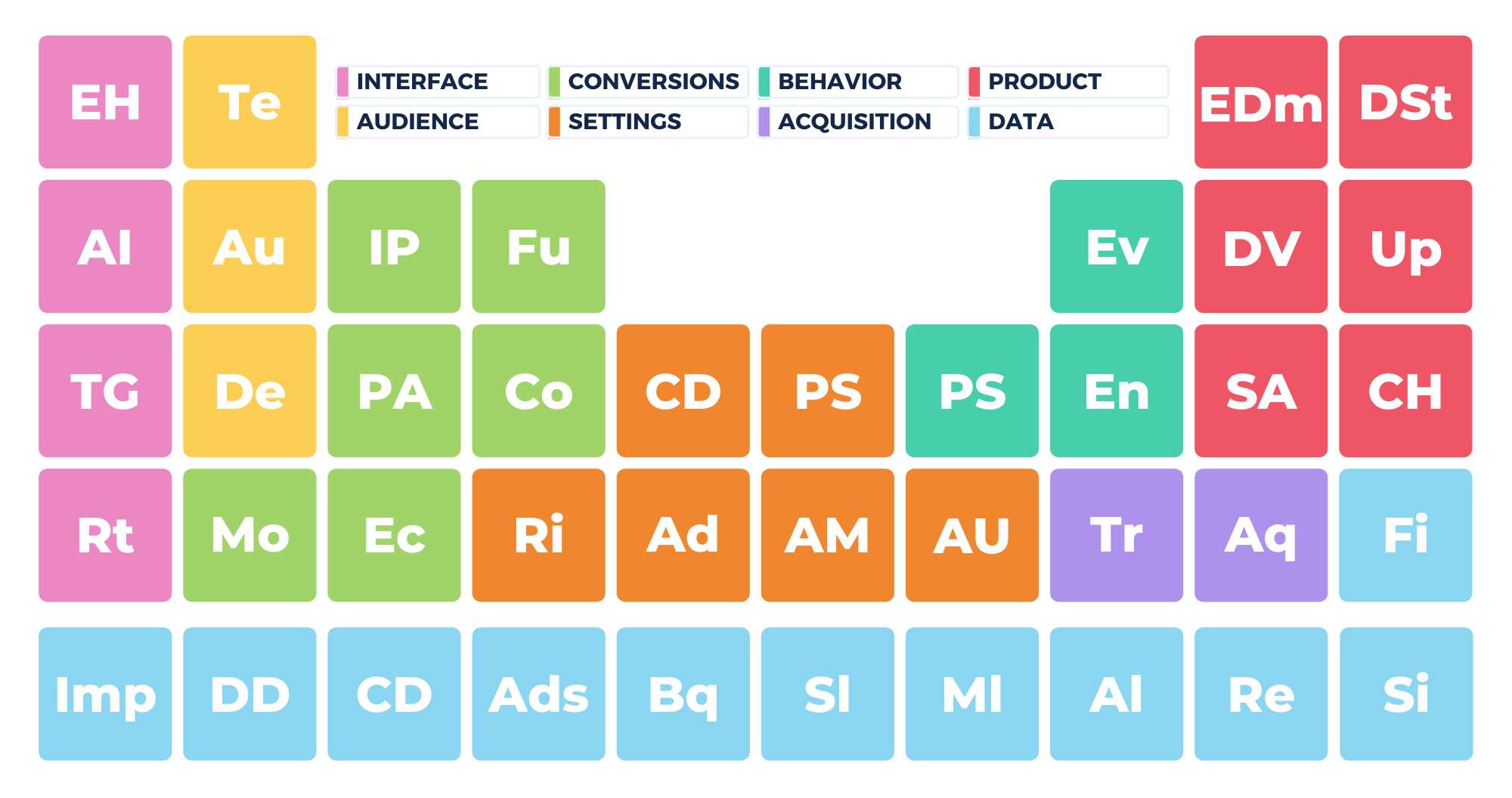
CUSTOM DIMENSIONS
Make use of GA4's generous number of custom dimensions

Custom dimensions have long been a part of Google Analytics, but there have been some changes to them with the release of Google Analytics 4. Still, with some experimentation and strategy, you can get comfortable with your new custom dimensions in no time.
So what are custom dimensions in Google Analytics 4? Custom dimensions are attributes or characteristics that you want to track. They can be event-scoped or user-scoped. To use custom dimensions, you’ll need to create tags in GTM and configure the dimension in your GA4 property.
Today, we’re going to discuss custom dimensions and show you how to configure them in your GA4 property. We’ll also point out the differences between GA4 custom dimensions and those in Universal Analytics, so come with us to learn all about this important way of customizing your GA4 property to your needs.
Watch The Video
Want to watch instead of read? Check out our video on custom dimensions on our YouTube channel:
What Are Custom Dimensions?
Custom dimensions are not new to GA4, though there have been some changes. If you’re a long-time Analytics user, you’re likely already familiar with custom dimensions, but let’s give a quick overview for those of you looking to get caught up.
Whenever you fire a hit to Google Analytics, your property will automatically collect some data by default. The data collected includes important information like user identifiers (such as their user ID) and device information. Also, of course, Analytics will record what content the user is interacting with and their behavior on your site and mobile apps.
But it’s likely that there is other data you want to collect that’s specific to your website and mobile apps. This is where custom dimensions come in. Instead of just collecting generic data, you can configure your property to collect data that matters to your business, along with what Analytics tracks automatically.
In short, a custom dimension is an attribute or characteristic (of an event, product, user, etc.) that you want to track (for example, a transaction ID, a product ID or category, a user’s pricing plan, etc.).
You’ll also notice that you can configure custom metrics in your GA4 property, so let’s just clarify the difference, even though the two are almost the same. Custom dimensions and metrics are very similar, but there is one difference: A custom dimension either has an event scope or a user scope, and a custom metric always has an event scope.
In GA4, you can set up 50 event-scoped custom dimensions and 25 user-scoped custom dimensions per property.
How to Use Custom Dimensions
To create your custom dimension, you’ll need to set up a trigger in your GA4 property and also create parameters in Google Tag Manager. Obviously, the easiest way to go about this is to use existing parameters that you already have set up in Google Tag Manager, but if you’re new to GTM, check out our previous post to get started.
To configure custom dimensions in your GA4 property, start by logging in, and then click “Configure” in the left-hand menu. From there, click on “Custom definitions.”
Once there, you can create a new custom dimension. Just click the blue “Create custom dimensions” box when you’re ready.

Now you’ll see a new window pop up where you can create your custom dimension.

Say, for example, you want to track the keywords users are entering into your website search bar. Here, you can just select an event-scoped dimension and enter “search_term” as your event parameter. Give it whatever name and description you find useful and click “Save” when you’re ready.

You can now use this custom dimension as long as you have it properly configured in Google Tag Manager as well.
There are a lot more situations in which you have to create custom dimensions to collect data. Setting up a browser size report in GA4 is one of them.
You can use your custom dimension in your exploration reports or check out your data by going to “Reports.”
*Remember that it can take up to 24 hours for data to appear from new custom dimensions.
You can also edit any of your custom dimensions by clicking on the three dots next to it and clicking “edit.”

How is GA4 Different and What Are The Benefits?
While custom metrics are unchanged in GA4, custom dimensions have been augmented quite a bit. The biggest difference between custom dimensions in Universal Analytics and GA4 has to do with the scope of your custom dimension.
In Universal Analytics, you could have your scope set to describe the hit, session, user, or product. Now, in GA4, the scope of your custom dimensions will now be set to either user-level or event-level.
Basically, all this means is that now, your custom dimension will always describe either who triggered the event or the event itself. Because GA4 is based around events, this makes sense, and you still have a lot of flexibility with your custom dimensions. But, of course, if you’re used to setting up custom dimensions using session scope and product scope, you’ll have to adjust to configuring new ones to fit within the user or event scope.
There are some ways to work around this though. Here are a few tips for setting up new custom dimensions in GA4 that will act similarly to the ones you have in Universal Analytics:
If you’re using custom dimensions with product scope in UA, you’ll want to set up GA4 dimensions using item parameters. These have effectively replaced your product-scope dimensions.
Using your eCommerce dimensions, such as item_catergory, you can set up custom dimensions that act the same way as your UA product scope ones. Check out Google’s eCommerce developer guide for more details and parameters.
If you’re looking to migrate your session-scoped dimensions from UA, you can simply set them up as event-scoped dimensions in GA4. Keep in mind that GA4 uses the concept of “engagement” rather than collecting plain session data in most cases, so that explains the shift here. Still, you should be able to replicate your desired dimensions using the event-scoped dimension option.
Another difference between UA and GA4 is how you create your custom definitions. In Universal Analytics, you had to configure the custom dimension and then write the code to send the value to your reports. But in GA4, all you have to do is send an event parameter along with the event and register that event parameter as a custom dimension in your GA4 property.
There are some big benefits to using custom dimensions in GA4. First, for every logged event parameter you set up as a custom dimension, you’ll get a new data card added in your event report. This new data card makes your reports more detailed and catered to your needs as a business.
Also, you can use your exploration reports to report on the same event parameter for as many events as you want without setting the same parameter over again for each event. This means once you set up a custom dimension, you can use it all throughout your exploration reports without having to reconfigure it each time.
Finally, if you create your own custom events in GA4, you will need to set up custom dimensions. Otherwise, the metrics won’t show up in your reports or explorations.
Custom Dimensions in Google Analytics 4
Setting up your custom dimensions in Google Analytics 4 is pretty simple, but there is a lot of strategy that goes into it, especially if you’re used to the scope options available in Universal Analytics.
As you make the shift to GA4, try out new ways to generate the data you find valuable in UA, and for the time being, continue using your existing UA property along with your new GA4 property.
Don’t forget to use your custom dimensions to enrich your exploration reports, as this can unlock incredible insights that weren’t available in Universal Analytics. For more tips on configuring your new GA4 property, check out our previous posts, and let us know what you think of custom dimensions in the comments!

